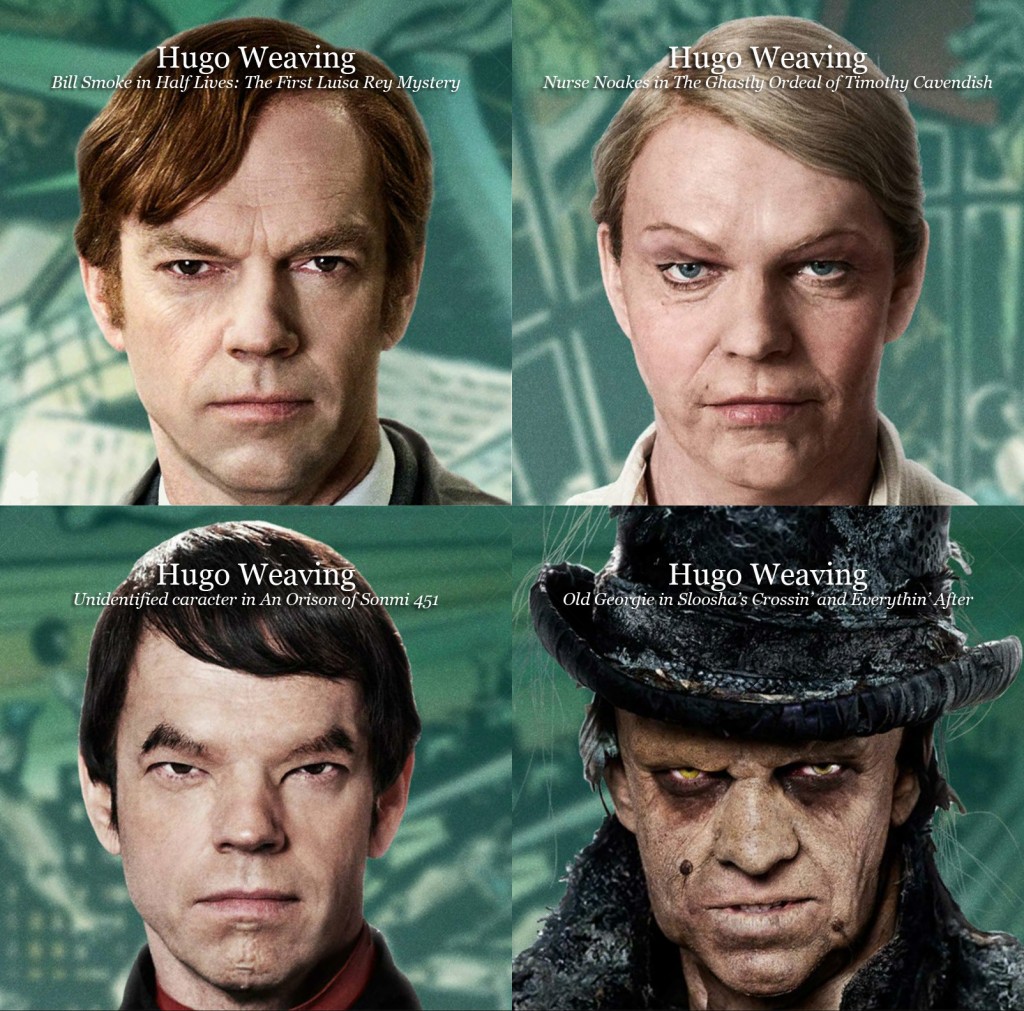I saw Cloud Atlas a few weeks ago but haven’t had time to write up my thoughts what with the election and freelance work and Thanksgiving and what not. Now that it’s out of theaters, I finally have a minute. A few mild spoilers after the jump.
Cloud Atlas is rarely boring but rarely coherent: constantly propelling us through six different story lines set in six different epochs, the film mixes genres as thoroughly as plots. One minute we’re in a futuristic sci-fi film set in Korea, the next we’re in a period costume drama set on the high seas. We’re then thrust into a post-apocalyptic action-thriller, before jumping back in time to a 70s-era detective story. We skip ahead a bit and find ourselves in a British farce set in the present day before jumping back to the first half of the 20th century for some light melodrama.
It’s a bit much.
There are others who can tell you how well this hews to the source material; I’ve not read it. Frankly, I didn’t find it confusing so much as annoying but surprisingly watchable. The deeper message, we are led to believe, is that we are all interconnected. Karma is like the elephant: It never forgets.
The problem with this jumpy interconnectedness is that we don’t get a sense of karmic connection due to the evolution of the characters throughout the film. Rather, we are led to believe that characters are connected through time because the same core of actors—Hugo Weaving, Tom Hanks, Halle Berry, Jim Broadbent, Doona Bae, and others—skip through the centuries, playing characters of different races and genders in order to show us that we are all one.
To be blunt: This is an aesthetic disaster.
Consider these four iterations of Hugo Weaving:
So, top left Hugo Weaving looks fine, and bottom right Hugo Weaving is made up to look like a demon because he’s a hallucination of Tom Hanks’. OK, I buy it.
But bottom left Hugo Weaving? Yeah, that’s Hugo Weaving made up to look like an Asian man. Top right Hugo Weaving? Made up to look like a bosomy monstrosity of a nurse. Of course, he looks like neither an Asian man nor a bosomy nurse: he looks like an actor in terrible, kinda racist make up and a man dressed up as a woman.
The result is a total train wreck. It distracts from the action onscreen and pulls the audience out of the film. And Hugo Weaving might not even be the worst example: The lengths gone to make the beautiful South Korean actress Doona Bae look like a white woman in two of the segments are just heartbreakingly terrible. By the end of the film, she looks like a poorly made porcelain doll donned in mid-19th century garb.
As some have noted, it is perhaps unsurprising that the Wachowskis would be drawn to a work in which gender and race are considered fluid and interchangeable. I’m not terribly interested in that debate/pseudo-Freudian analysis, other than to say that it strikes me as an ideological choice rather than an artistic one. It is certainly not a successful artistic choice, anyway.
I was reminded of Cloud Atlas a couple of weeks back when I saw that the “Cat Man” had died, apparently by his own hand. In a post headlined “Cat Man And The Limits Of Defying Human Nature,” Rod Dreher briefly noted his death:
One of the best things I ever read in a newspaper was a salty takedown from a Palm Beach Post columnist back in the 1990s, who wrote about some outrage that Marilyn Manson, the Gothic pop star who was big back in the day, had pulled. Manson, born Brian Hugh Warner, had lived for a while in south Florida. The columnist, whose name I have forgotten, wrote that no matter how theatrical and outrageous Manson made himself, he would always and forever be “Brian From Boca.”
We can never fully get away from ourselves. That is our curse, but it can also be our salvation. RIP, Cat Man.
We are not infinitely malleable beings. We look weird when we’re made up to appear as a different gender or a different race or a different species altogether. We look weird for a reason: That is not who we are. The sooner we accept that, the happier we will be.
Of course, this is not to say that we are what we look like or that we should judge books by their covers. It is merely to say that we are what we are and that working within what we are is a surer path to self-contentment than striving to be something we never can.
